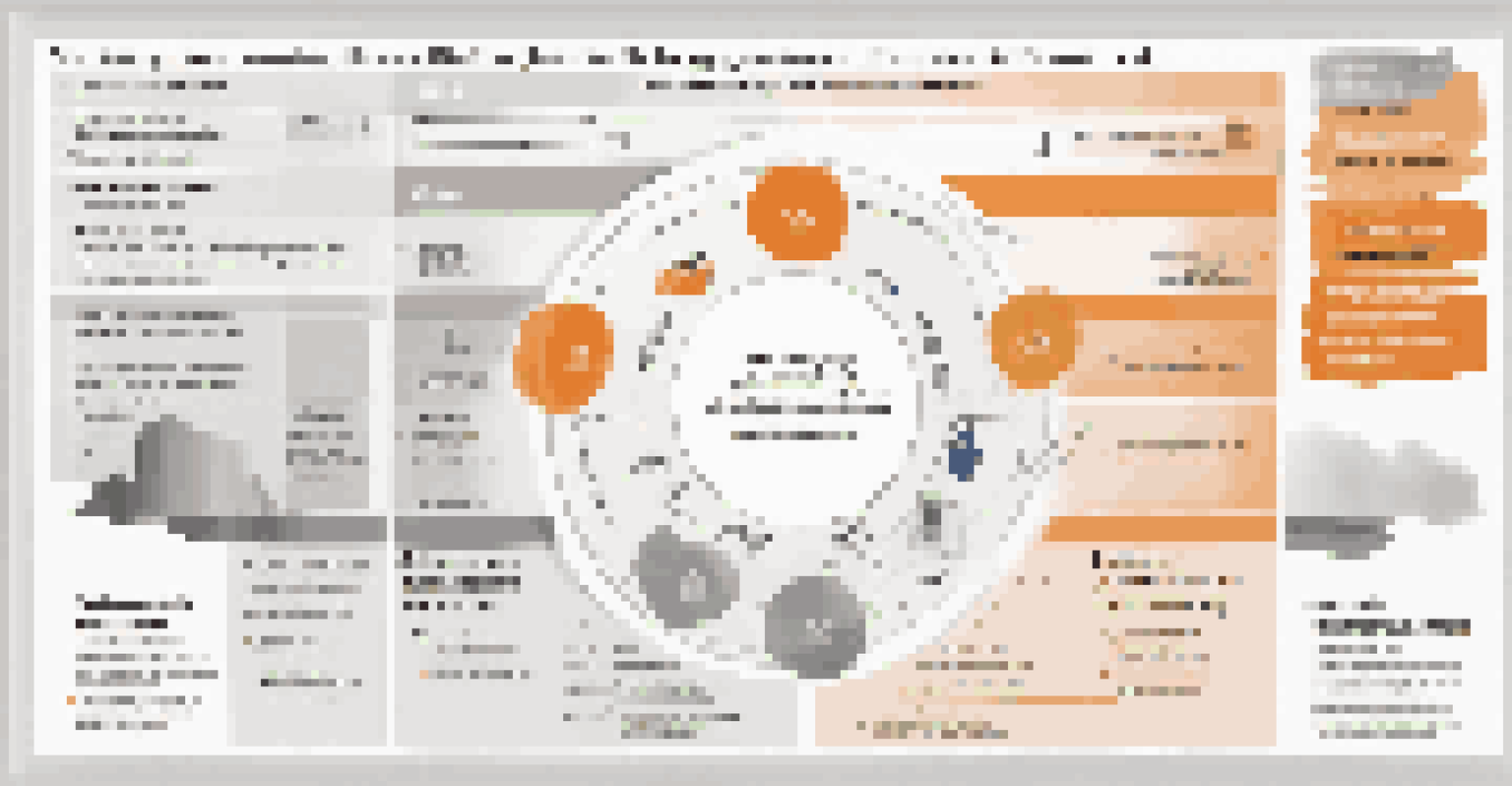Data Governance and Risk Management: A Strategic Approach

Understanding Data Governance and Its Importance
Data governance refers to the overall management of data availability, usability, integrity, and security. It establishes the framework for ensuring that data is accurate and accessible to those who need it. In an age where data-driven decision-making is vital, having a solid governance strategy is essential for organizations to maintain trust and compliance.
Without data, you're just another person with an opinion.
Without proper data governance, organizations may face issues such as inconsistent data, regulatory fines, and loss of customer trust. The importance of data governance cannot be overstated, as it acts as the backbone for a reliable data management strategy. By prioritizing data governance, organizations can create a culture of accountability and transparency around their data assets.
Furthermore, effective data governance helps organizations align their data initiatives with business objectives. This ensures that data is not just treated as a by-product but as a strategic asset that drives growth and innovation. In essence, a strong data governance framework lays the groundwork for effective risk management.
The Role of Risk Management in Data Governance
Risk management involves identifying, assessing, and mitigating risks that could impact an organization's data integrity and security. In the context of data governance, risk management is crucial as it helps organizations safeguard their data against breaches, leaks, and other vulnerabilities. By incorporating risk management principles into data governance, businesses can proactively address potential issues before they escalate.

A strategic approach to risk management involves regularly evaluating the risks associated with data handling and storage. This includes assessing compliance with regulations like GDPR or HIPAA, which can pose significant legal ramifications if ignored. Regular risk assessments allow organizations to stay ahead of potential threats and ensure that their data governance practices remain robust.
Importance of Data Governance
Data governance establishes a framework that ensures data accuracy, accessibility, and compliance, ultimately fostering trust within organizations.
Moreover, integrating risk management into data governance encourages a holistic view of data security. It fosters collaboration between IT, compliance, and business units, creating a unified approach to data handling. By working together, these teams can better identify risks and implement effective solutions that protect the organization as a whole.
Establishing a Data Governance Framework
Creating a data governance framework is the first step in developing effective governance practices. This framework outlines roles, responsibilities, and processes for managing data throughout its lifecycle. A well-defined framework not only clarifies who is in charge of data but also establishes guidelines for data quality, security, and usage.
In God we trust; all others bring data.
One effective way to develop this framework is by forming a cross-functional data governance team. This team should consist of members from various departments, including IT, legal, and business operations. By bringing together diverse perspectives, organizations can create a more comprehensive governance strategy that addresses the needs of all stakeholders.
Additionally, regular training and communication regarding data governance policies can further enhance the effectiveness of the framework. Engaging employees through workshops and updates ensures that everyone understands their role in maintaining data integrity. This collective responsibility fosters a culture where data governance is prioritized and valued across the organization.
Identifying Risks in Data Management
To effectively manage risks, organizations must first identify what those risks are in their data management practices. Common risks include data breaches, unauthorized access, and inadequate data quality. By conducting thorough risk assessments, organizations can pinpoint vulnerabilities and prioritize them based on potential impact.
Using tools like data audits and vulnerability assessments can help uncover hidden risks that may not be immediately apparent. These assessments provide valuable insights into areas that require attention, allowing organizations to strengthen their data governance framework. Moreover, understanding the types of data being handled and their sensitivity is crucial in identifying specific risks.
Role of Risk Management
Integrating risk management within data governance helps organizations proactively safeguard against data breaches and maintain data integrity.
Ultimately, identifying risks is an ongoing process that requires vigilance and adaptability. As technology evolves and regulations change, so do the risks associated with data management. By continuously monitoring and updating risk assessments, organizations can stay one step ahead and ensure their data governance practices remain effective.
Implementing Effective Data Policies
Once risks are identified, organizations must implement effective data policies to mitigate those risks. These policies should cover various aspects of data management, including data access, usage, retention, and sharing. Clear policies not only protect the organization but also empower employees to handle data responsibly.
For example, access control policies can dictate who can view or modify sensitive data, ensuring that only authorized personnel have the necessary permissions. Additionally, policies surrounding data retention help organizations maintain compliance with legal requirements while reducing unnecessary data storage costs. By providing clear guidelines, organizations can minimize the risk of data leaks or breaches.
Moreover, regularly reviewing and updating these policies is vital to adapt to changing business needs and regulatory landscapes. Engaging stakeholders during policy development ensures that policies are practical and relevant. This collaborative approach fosters a sense of ownership and accountability across the organization, further strengthening data governance efforts.
The Benefits of Strong Data Governance and Risk Management
Implementing robust data governance and risk management practices brings numerous benefits to organizations. Firstly, it enhances data quality and reliability, ensuring that decision-makers have access to accurate information. This leads to more informed decisions that can positively impact business outcomes.
Additionally, strong governance practices help organizations maintain compliance with regulations, reducing the risk of costly fines and penalties. By proactively managing risks, organizations can create a safer environment for data handling, fostering trust among customers and stakeholders alike. This trust is critical in today's digital landscape, where data breaches can severely damage reputations.
Continuous Improvement Matters
Ongoing enhancements to data governance practices are essential to adapt to evolving business needs and emerging data management challenges.
Finally, organizations that prioritize data governance and risk management are better positioned for innovation. With a solid framework in place, teams can confidently explore new technologies and data-driven initiatives. This agility not only drives growth but also enhances the organization's competitive edge in an increasingly data-centric world.
Continuous Improvement in Data Governance Practices
Data governance is not a one-time effort; it requires continuous improvement to remain effective. As organizations grow and change, their data management needs will evolve, necessitating regular updates to governance frameworks and policies. Establishing a culture of continuous improvement ensures that data governance practices remain relevant and effective.
Employing feedback mechanisms, such as employee surveys and data audits, can provide insights into the effectiveness of current practices. This feedback allows organizations to identify areas for improvement and implement changes accordingly. Additionally, staying informed about industry trends and best practices can help organizations adapt their strategies to meet emerging challenges.

Moreover, fostering a culture of accountability and ownership among employees can drive continuous improvement. Encouraging team members to voice concerns and suggest enhancements creates an environment where everyone is invested in data governance. Ultimately, organizations that embrace continuous improvement will be better prepared to face the ever-evolving landscape of data management.